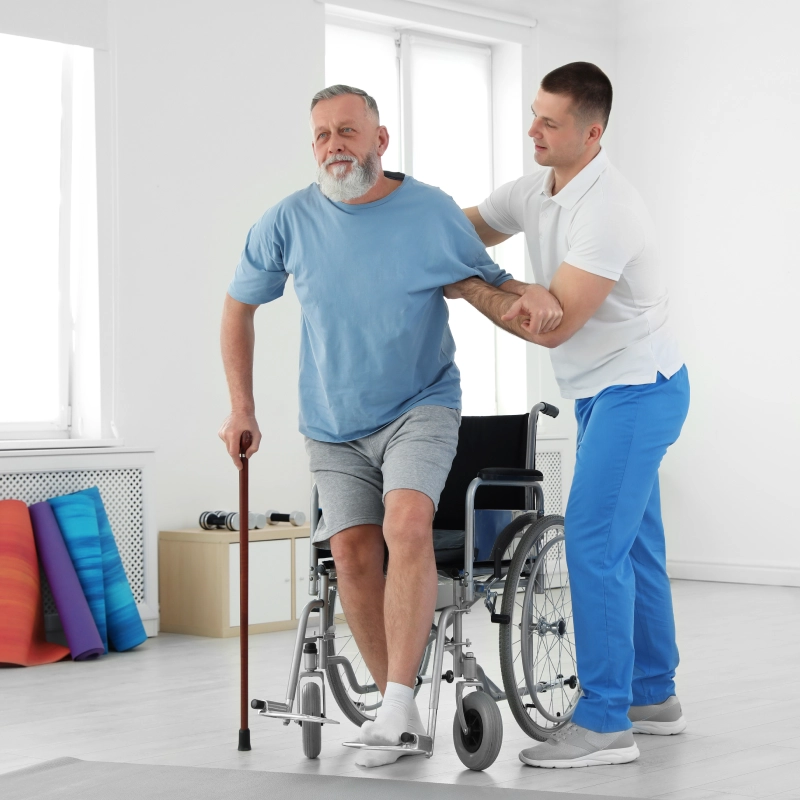
A stroke is a medical emergency that occurs when blood flow to part of the brain is interrupted. This will damage brain cells, leading to a range of physical, speech & swallowing and cognitive impairments. While timely medical intervention is essential to minimize damage, the path to recovery doesn't end there. In fact, early intervention with inpatient neuro-rehabilitation at a neuro rehabilitation center during the acute stage of stroke is crucial for maximizing a patient's chances of regaining function and independence.
The Power of Plasticity
The brain has a remarkable ability called neuroplasticity, which allows it to reorganize itself after an injury. In the aftermath of a stroke, the brain is primed for this process. By initiating neuro-rehabilitation as soon as possible, we can capitalize on this window of opportunity and promote the brain's ability to relearn skills and establish new neural pathways.
Benefits of Inpatient Neuro-rehabilitation
Here's why receiving neuro-rehabilitation within the inpatient setting during the acute stage of stroke offers significant advantages:
- Specialized Care: A dedicated team of therapists, including physical, occupational, speech-language pathologists, Orthotists & Prosthetists and cognitive therapists, work together to address a patient's specific needs. This comprehensive approach ensures a holistic recovery plan targeting motor function, daily living activities, communication, and cognitive abilities.
- Intensive Therapy: Inpatient settings allow for frequent and intensive therapy sessions, crucial for maximizing neuroplasticity. Repetition and focused practice during this critical window can significantly enhance the brain's ability to rewire itself.
- Close Monitoring: The hospital environment provides constant medical supervision. Therapists can closely monitor a patient's progress, adjust treatment plans as needed, and address any medical complications that may arise during rehabilitation.
- Early Mobilization: In the acute stage, preventing complications like muscle contractures and deconditioning is vital. Inpatient rehabilitation facilitates early mobilization, helping patients regain strength, coordination, and balance. This not only improves physical function but also reduces the risk of falls and other medical complications down the line.
- Management of Spasticity: Stroke can sometimes lead to spasticity, a condition characterized by muscle stiffness and involuntary muscle contractions. Inpatient rehabilitation allows for early intervention with medications, splinting, and physical therapy techniques to manage spasticity and prevent it from hindering recovery.
- Education and Support: The rehabilitation team not only works with patients but also educates and empowers their families and caregivers. This includes providing training on transferring, assisting with daily activities, and emotional support strategies.
Benefits of Advanced Technology in optimizing the recovery journey
Inpatient neuro-rehabilitation during the acute phase of stroke/head injury lays a strong foundation for long-term recovery. Advanced technology like Robotic Assisted Gait training, Robotic Arm Training, Body Supported Treadmill, Balance Master, Virtual Reality, Functional Electric Stimulation, Hyperbaric Oxygen Therapy, etc. play a crucial role. Here's how it sets the stage for continued progress:
- Improved Functional Outcomes: Early and intensive therapy strengthens muscles, improves coordination, and enhances a patient's ability to perform daily activities like dressing, bathing, and toileting. This empowers patients to regain independence and return to a higher quality of life.
- Reduced Length of Hospital Stay: Effective rehabilitation can accelerate a patient's progress towards discharge, freeing up hospital beds for new patients while allowing stroke survivors to continue their recovery in a more familiar environment.
- Prevention of Secondary Medical Complications: Early intervention can help prevent complications like pneumonia, blood clots, and pressure sores, which are common in critically ill patients and can further impede recovery.
- Enhanced Long-Term Rehabilitation: The skills and strategies learned during inpatient rehabilitation equip patients for successful transition to outpatient or home-based rehabilitation programs. This continuity ensures a smoother and more effective long-term recovery journey.
Conclusion
A stroke is a life-altering event, but it doesn't have to define one's future. By initiating inpatient neuro-rehabilitation during the acute stage, we can harness the brain's remarkable plasticity to promote recovery, improve functional outcomes, and empower stroke survivors to regain independence and a better quality of life. Early intervention is a critical investment in a patient's future, paving the way for a more successful and fulfilling journey of recovery.

